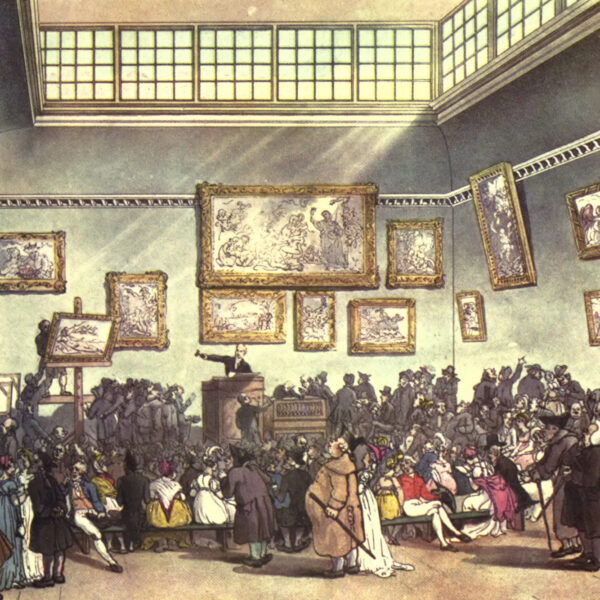The gavel falls, and the final bid is called by the auctioneer. Now, who pays the auction house, and what is the real sale price?
Auctions can be exciting. As buyers anticipate their target lots, adrenaline builds as each potential bidder looks to fend off the competition. And just maybe, the battle begins. Consignors wait, hoping that the battle will bring a runaway price, maybe a new record. However, while there seems to be an auction somewhere, nearly every single day, the jumble of numbers is often confusing to both both buyers and sellers. Let’s take a run through these numbers and see if we can shed a little light on the algebra of auctions.
As the auctioneer raps his gavel to accept the final bid, the lot is said to be ‘hammered’, and the final bid is called the ‘hammer price’. There was a time when the last bid, the hammer, was what the winning bidder paid. The consignor paid a seller’s commission as a percentage of the hammer, and auctions were simple math. The hammer price was the ‘auction price realized’, the consignor received something less than 100% of the hammer price, and the auction house kept the difference. Ideally, the auction room competition led to a higher price than a private sale, justifying the auction house’s take.
In 1975, Sotheby’s and Christies instituted a ‘buyer’s premium’, and other auctioneers followed suit. The rationale behind a buyer’s premium was that buyers would pay for the services that they received from the auction house – maybe the comfortable folding chairs and fancy paddles – and that the entire auction expense would not be shouldered by the consignors alone. The counter-argument was that auction houses were deceiving consignors into thinking that someone else was picking up the tab. Coin auction houses followed, with buyer’s premiums first set at 10%, then 15%, then a calculator necessary 17.5%, and now 20% by both Heritage and Stack’s Bowers. To make matters even more complicated, at some point in this process, seller’s commissions turned negative. That is, sellers began taking all of the hammer and even some of the buyer’s fee. Rendered down, what does this all mean?
First, from a buyer’s point of view, the full auction price realized, commonly abbreviated APR, is the only relevant number. If my winning bid is $10,000 plus 20% buyer’s premium, I am fully aware that my cost is $12,000. Buyers are always doing this backward math, figuring a price to pay, then backing out the buyer’s premium for a preferred bid. Furthermore, when we quote a prior auction sale price, we again are referring to the full APR, including both the hammer and buyer’s fee.
The consignor’s side of the ledger is usually the source of confusing math. After all, if a consignor pays no seller’s commission, maybe by way of an ubiquitous ‘0% Seller’s Fee’ coupon, then the consignor must be getting a free ride, correct? Well, it may seem so, but let take a look at the numbers.
Let’s assume that two identical coins sell to the same audience of bidders, one with no buyer’s fee, the other with today’s standard 20%, and each is seen as fully valued at $12,000. The coin selling with no buyers fee should sell for $12,000 hammer, while the coin with a 20% buyer’s fee should sell for $10,000 hammer, or $12,000 ‘all in’. Consider that the seller’s commission on the first coin might be 10% with the consignor receiving 90% of hammer, while the seller’s commission on the second coin is minus 8%, meaning that the consignor will receive 108% of hammer. In each case the buyer pays $12,000 and the consignor receives $10,800.
The trend towards higher buyer’s fees has led to no significant change in auction buyers’ outcomes, as bidders negate these increased fees by adjusting their bids accordingly. However, auction sellers may unknowingly receive a smaller share of the auction sale if they fail to acknowledge the issue of buyer’s fees. Understanding the algebra of the auction room will ensure that consignors maintain their share of the total auction prices realized.

